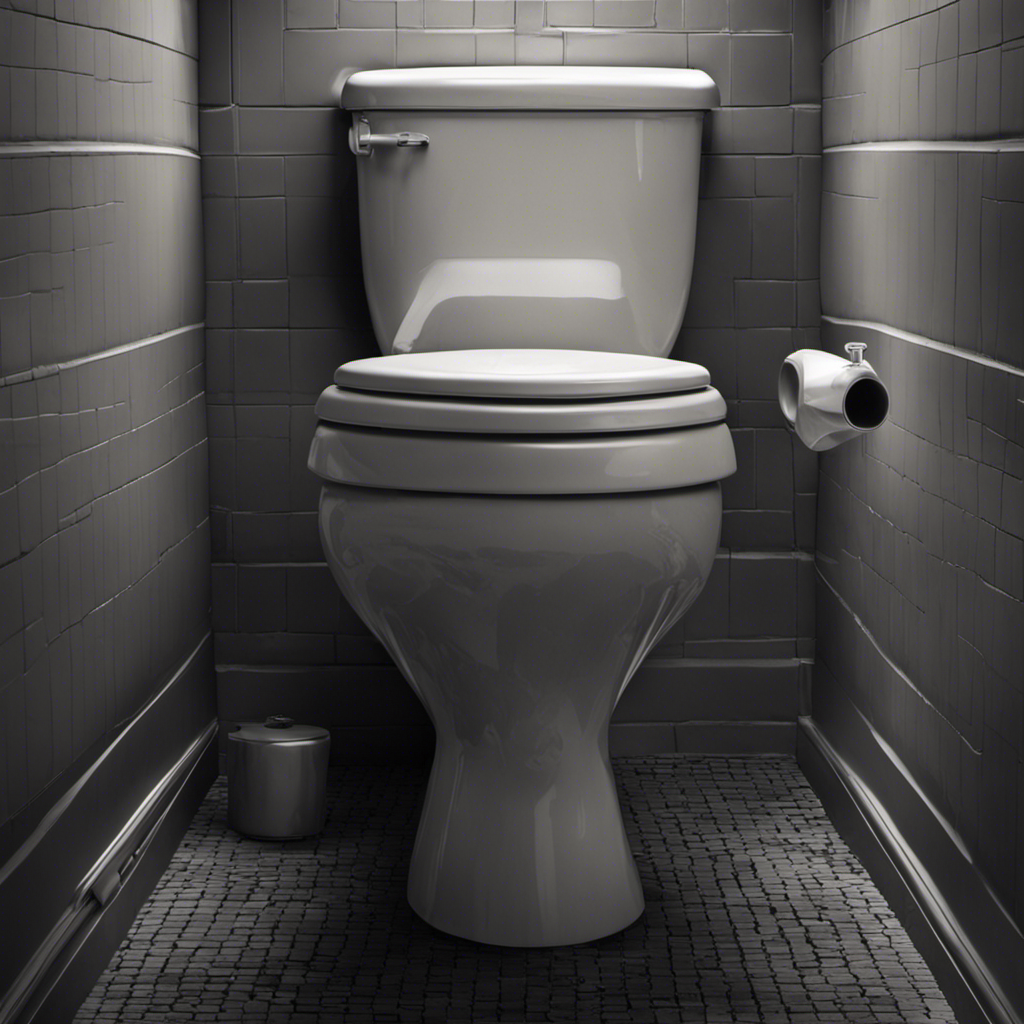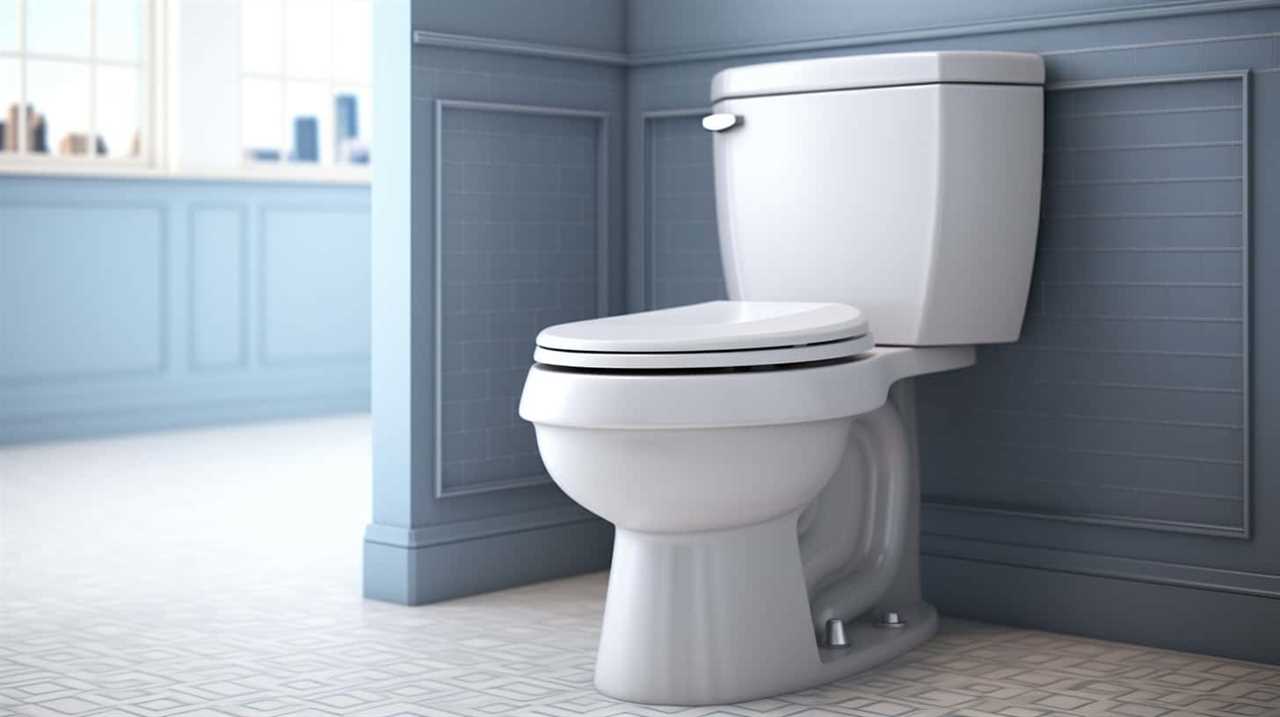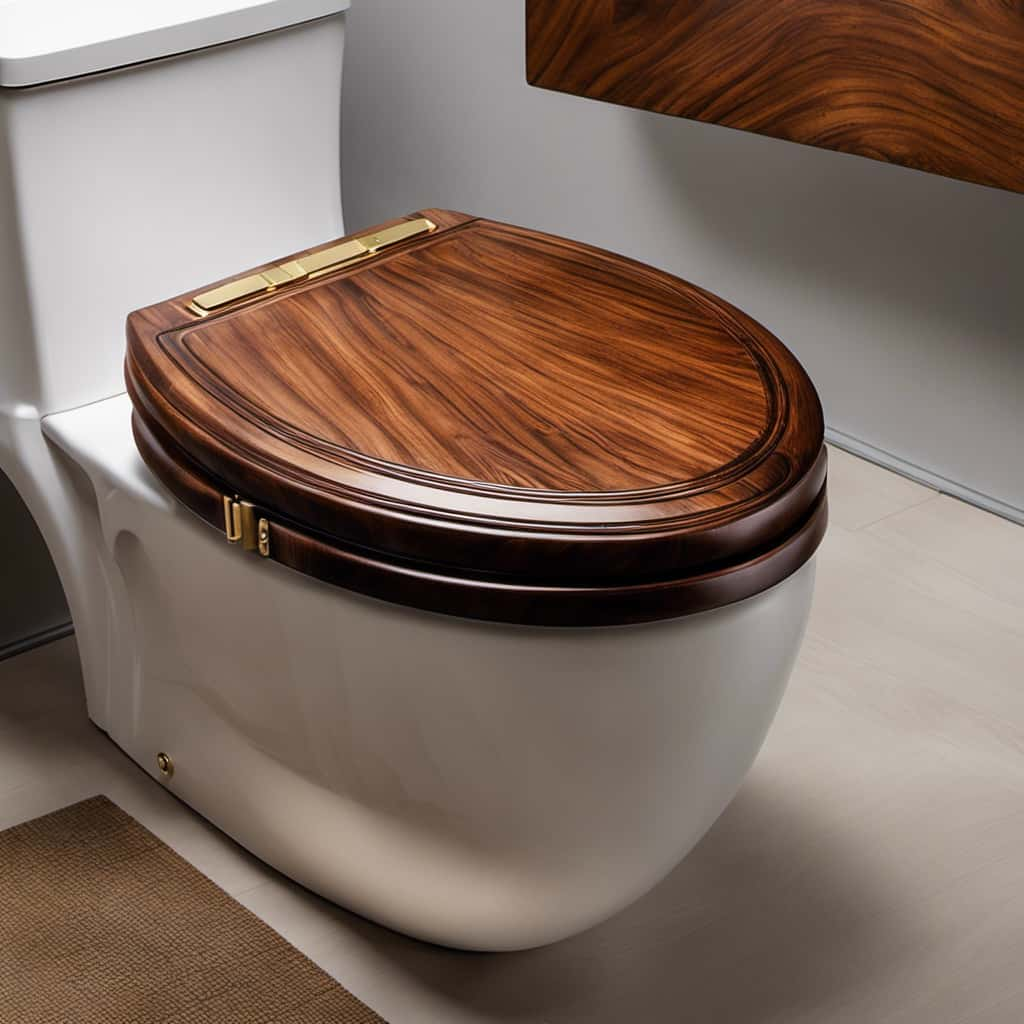As I sit on the porcelain throne, my leg suddenly goes numb and tingly, leaving me wondering why this strange phenomenon occurs.
In this article, let’s explore the causes behind our legs falling asleep on the toilet. We’ll delve into the intricate workings of our nerves, the impact of blood flow, and even the role of our sitting posture.
Armed with this knowledge, we can find practical tips to prevent this uncomfortable experience in the future.
Key Takeaways
- Sitting for an extended period or with improper posture can cause leg numbness or tingling on the toilet.
- Nerve compression and restricted blood flow are common causes of leg falling asleep on the toilet.
- It is important to maintain good posture, take breaks, and consult a healthcare professional if leg sleepiness or numbness is frequent.
- Using a footstool, keeping feet flat on the ground, and reducing pressure on nerves can help prevent leg falling asleep on the toilet.
Causes of Leg Falling Asleep on the Toilet
One of the main reasons your leg falls asleep on the toilet is due to the pressure put on the nerves. When we sit on the toilet for an extended period, the weight of our body compresses the nerves against the hard toilet seat. This compression restricts blood flow and causes the tingling sensation commonly known as ‘falling asleep.’
Another cause of leg cramping on the toilet is poor posture. Sitting with your legs crossed or with improper alignment can put additional strain on the nerves and increase the likelihood of leg sleepiness. To prevent this, it’s important to maintain good posture and take breaks if you’re spending a long time on the toilet.
Stretching exercises and massaging the affected area can also provide relief for leg sleepiness.
The Role of Nerves in Leg Sleepiness
When you sit on the toilet for too long, the pressure on your nerves can cause that tingling sensation in your leg. This happens because of nerve compression, which occurs when there is excessive pressure on the nerves in your leg.
Nerve compression can be caused by various factors, including sitting in a cramped position for an extended period of time. Additionally, certain neurological conditions, such as sciatica or peripheral neuropathy, can also contribute to leg sleepiness on the toilet.
It’s important to be mindful of your posture and take breaks to stretch and move around to alleviate pressure on your nerves. If you frequently experience leg sleepiness or numbness, it’s advisable to consult with a healthcare professional to determine the underlying cause and receive appropriate treatment.
Blood Flow and Leg Numbness on the Toilet
Sitting on the toilet for too long can cause tingling in the leg due to nerve compression caused by excessive pressure. However, it’s not just the nerves that are affected during prolonged toilet sessions.
Circulation issues can also play a role in leg numbness. When we sit for an extended period, blood flow can become restricted, leading to decreased oxygen and nutrient supply to the leg muscles. The pressure from the toilet seat can further exacerbate this issue by compressing blood vessels and impeding the normal flow of blood. This can result in a tingling or ‘falling asleep’ sensation in the leg.
To prevent such discomfort, it is advisable to limit the time spent on the toilet and take breaks to stretch and promote healthy blood circulation.
Sitting Posture and Leg Tingling on the Toilet
To prevent leg tingling while on the toilet, make sure you maintain a proper posture. Sitting for long periods of time on the toilet can lead to discomfort and muscle fatigue, causing your leg to fall asleep.
Here are three important factors to consider in order to prevent leg tingling:
-
Sit with your feet flat on the ground: Keeping your feet firmly planted on the floor helps to distribute your weight evenly and alleviate pressure on your legs.
-
Avoid crossing your legs: Crossing your legs can restrict blood flow and put additional pressure on your nerves, leading to leg tingling.
-
Use a footstool: Elevating your feet with a small footstool can help improve your sitting position and reduce the strain on your legs.
By maintaining a proper sitting position, you can minimize the risk of leg tingling and discomfort.
Now, let’s explore some tips to further prevent your leg from falling asleep on the toilet.
Tips to Prevent Leg Falling Asleep on the Toilet
Remember to keep your feet flat on the ground and use a footstool to maintain a proper sitting position on the toilet. This is crucial for preventing leg falling asleep while using the toilet.
When we sit on the toilet with our feet dangling, it can cause pressure on the nerves in the legs, leading to tingling or numbness. By keeping our feet flat on the ground and using a footstool, we can reduce the pressure on these nerves and maintain proper blood flow.
Additionally, practicing good toilet hygiene and bathroom safety can also help prevent leg tingling. This includes keeping the bathroom clean and dry to prevent slips and falls, and using handrails or grab bars for added stability.
Frequently Asked Questions
Is Leg Falling Asleep on the Toilet a Common Occurrence?
Yes, it is a common occurrence for my leg to fall asleep on the toilet. I believe it has to do with my posture and how it affects blood circulation in my legs.
Can Leg Numbness on the Toilet Be a Sign of a More Serious Underlying Condition?
Leg numbness on the toilet can be a sign of a more serious underlying condition. It is important to pay attention to any signs, as it may be related to poor circulation or other health issues.
Are There Any Specific Medical Conditions That Can Contribute to Leg Sleepiness on the Toilet?
There are specific medical conditions that can contribute to leg sleepiness on the toilet, such as nerve compression or poor blood circulation. Managing leg numbness without medical intervention may involve changing positions or taking breaks.
Can Sitting Too Long on the Toilet Cause Long-Term Damage to the Nerves in the Legs?
Sitting too long on the toilet can have long-term effects on the nerves in the legs. To prevent this, it’s important to avoid prolonged sitting, take breaks, and maintain good posture.
Are There Any Exercises or Stretches That Can Help Alleviate Leg Numbness on the Toilet?
Exercises for leg numbness relief and stretches to prevent leg sleepiness can help alleviate discomfort. By engaging in regular physical activity and incorporating mobility exercises, you can improve circulation and prevent your leg from falling asleep on the toilet.
Conclusion
In conclusion, experiencing your leg falling asleep on the toilet can be a perplexing and uncomfortable sensation. Understanding the causes, such as nerve compression, restricted blood flow, and improper sitting posture, can help prevent this occurrence.
By making simple adjustments like shifting your weight, keeping your feet flat on the floor, and avoiding prolonged sitting, you can alleviate this tingling and numbness.
So next time you find yourself on the porcelain throne, remember these tips to keep your legs awake and vibrant, allowing you to conquer your bathroom breaks with ease.










